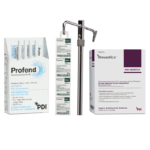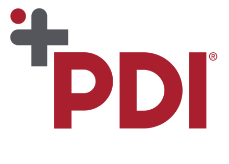Interventional Care


We notice that you are visiting us from . This site only services US-based visitors. Would you like to visit the site that is appropriate for your location?

The setting of a long-term care (LTC) environment is incredibly complex and poses unique challenges for cleaning and disinfection. LTC is not only a healthcare setting but also the place that residents call their home. This can pose distinct questions as to how cleaning and disinfection should best be done to prevent the spread of disease to the vulnerable population within. The residents that live in LTC are particularly susceptible to infections due to age-related comorbidities as well as a decline in overall immune defenses.
To compound the difficulty, many of the physical structures are older and contain carpeted hallways and other soft surfaces that are easily contaminated. What can the Infection Preventionist do to help mitigate the infection risks within LTC? Let’s look at a few important points to remember when approaching the environment of care.
Establishing Cleaning and Disinfection Practices
Perhaps the first thing to establish when thinking about a long-term care setting is cleaning and disinfection practices that are thorough, effective, and efficient. Many studies show that environmental services staff (EVS) wipe down only 50% or less of surfaces (1). Visual inspections and rounds are not enough by themselves to ensure quality oversight.
The CDC states that for surfaces to be cleaned appropriately there should be a consistent pattern for the cleaning of rooms and shared equipment, as well as clearly established assignments of who is to clean what (2). Also, following the same pattern, every time makes it easier to ensure consistent cleaning. Quality monitoring can be improved with the use of a checklist or other audit tools. Including the EVS staff in quality oversight and the use of these tools allows them to feel a sense of shared responsibility and gives them feedback which increases engagement and motivation.
The Importance of Cleaning Schedules
With increasing efforts to provide person-centric facilities such as the “Eden Alternative” approach (3), it has never been more important to consider the relevance of cleaning schedules that revolve around the residents’ needs and are appropriate for the ongoing activities. For example, mopping the activities room when bingo is being played or cleaning the dining room during mealtime is not a person-centered approach.
Cleaning of residents’ rooms can be particularly challenging, especially if the resident is resistant to the efforts of the EVS staff due to dementia, paranoia, or other issues such as hoarding. Striking a balance between the resident’s rights and the importance of environmental cleanliness is key and should be a part of the resident’s care plan through a multidisciplinary team.
How often to clean and what to clean can sometimes be confusing in LTC. The Association for Professionals in Infection Control and Epidemiology (APIC) recommends the following (4):
While cleaning and disinfection can often be a tedious task, studies show that the environment and survival of pathogens on surfaces contribute to healthcare-associated infections (HAI’s) (5). Some pathogens can survive on surfaces for weeks or even months, still posing a threat of infection. A decline in the available number of trained EVS staff during and throughout the pandemic made it even more challenging for LTC facilities to protect their residents.
To truly mitigate this risk however, institutions cannot rely on just one method or approach to environmental decontamination. Rather, a layered approach must be considered as the new “gold standard” which would include an environmental cleaning program with proven practices to reduce the transmission of organisms, a robust hand hygiene program for both staff, patients, and visitors, the use of appropriate disinfectants, and the inclusion of new novel approaches such as UV technology which show proven reduction in organisms on treated surfaces (7). By utilizing the layered approach as the new standard of care, facilities are helping to decrease the risk of healthcare associated infections (HAI’s) in the LTC setting that come from a contaminated environment.
References: